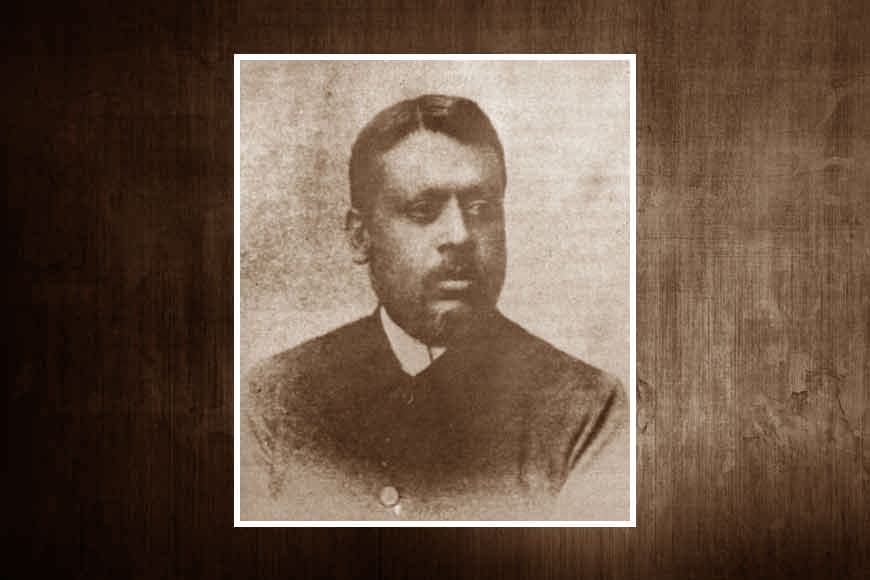The man without whom Alipore Zoo would never have been – GetBengal story

Both January and February are special months for a very special Kolkata landmark, so we figured this was a good time to put this article out. The landmark in question is what we know as Alipore Zoo, though officially it ought to be called Zoological Garden, Alipore. January is special for it because it was inaugurated on January 1, 1876 by Edward VII, then Prince of Wales. And February 15 marks the birth of a man whose name ought to be at least as famous as the zoo, but isn’t.
That man was Ram Brahma Sanyal (1851-1908), the first Indian superintendent of Alipore Zoo. Under him, Alipore Zoo became a pioneer among the world’s zoos in the 19th and early 20th centuries, and he published the first handbook on captive animal keeping, thanks in part to his success in breeding the rare Sumatran rhinoceros in captivity in 1889. The monumental nature of this achievement becomes clear when you consider that the next time a Sumatran rhino was born in captivity was in 2001, a full 112 years later, at Cincinnati Zoo in the USA. In Sanyal’s own time, captive breeding programmes were practically unheard of.
It was primarily owing to Sanyal that Alipore Zoo achieved its unusually high scientific standards, and Kalākaua, the last king of Hawaii, visited the zoo on May 28, 1881 during a world tour. He wasn’t the only famous visitor, of course, but more on that later.
Years later in 1915, noted English ornithologist Frank Finn was to dedicate his book ‘Garden and Aviary Birds of India’ to ‘my friend, Rai R.B. Sanyal, Bahadur, C.M.Z.S., Superintendent of the Calcutta Zoo’.
Prevented from completing his medical education owing to faulty eyesight, Sanyal received stellar support from his Botany professor Dr George King and Anatomy professor Dr John Anderson. These were the men who would eventually encourage him to enter into service at the zoo, which was still some years in the future. Having joined Calcutta Medical College in 1869, Sanyal was probably unaware that there had been talk of a zoological garden for Calcutta in 1867, when E.C. Bailey, president of the Asiatic Society, first raised the question at the society’s annual meeting.
In 1873, Lieutenant-Governor Sir Richard Temple formally proposed the formation of a zoo, and the government allotted roughly 160 bigha (about 65 acres) of land in Alipore in response to a joint petition from the Asiatic Society and Agri-Horticultural Society. The growing zoo was initially run by an honorary managing committee, which included Carl Louis Schwendler, a German electrical engineer with a passion for zoology, Dr George King, and Dr John Anderson, acting superintendent.
The managing committee was on the lookout for a capable and efficient assistant to help with the running of the zoo, which was to be opened to the public in May, 1876 with a total of 31 animal specimens. Finally, King and Anderson remembered their former student Ram Brahma, who was inducted into the staff as a temporary labour supervisor in January, 1876.
From 1877, Sanyal became more actively involved in the running of the zoo as a sort of head clerk, but his knowledge of zoology and medicine, and passion for research, got him elevated to the ground-breaking post of acting superintendent in 1879, and superintendent a year later. Not that there weren’t hurdles on the way. From the minutes of the managing committee’s meeting of July 19, 1877, one learns that “Babu R.B. Sanyal is unfit to have the job of management of the Garden and that it is necessary to approve a European head keeper…” However, no European was found worthy of the job, and Sanyal so obviously had the skills for it that the committee presumably ran out of options.
This was the man whose ‘A Hand-book of the Management of Animals in Captivity in Lower Bengal’ (1892) would cause such a stir in the global zoological community that even the venerable Nature magazine published a review which stated: “Considering the number of zoological gardens in Europe, and their long establishment, it is singular that it should have been left to the superintendent of a zoological garden in Calcutta, and to a native of India, withal, to produce the first practical handbook on the management of animals in captivity.” Despite the patronising tone, the magazine did bestow praise on Sanyal’s “remarkable book”, saying the author deserved all credit “for much valuable information contained in it”.
Years later in 1915, noted English ornithologist Frank Finn was to dedicate his book ‘Garden and Aviary Birds of India’ to ‘my friend, Rai R.B. Sanyal, Bahadur, C.M.Z.S., Superintendent of the Calcutta Zoo’. Two years later, writing about his book in a magazine article, Finn said of Sanyal: “His own book on the management of animals in captivity in lower Bengal is the best that has been published in any language, and reflects credit alike on the practical zoological attainments and command of English of the writer.”
In 1893, the highly prestigious Zoological Society of London elected him a ‘corresponding’ (presumably long-distance) member, and in 1894, the Commissioner of Bombay Municipality sent the head animal keeper of Bombay’s Victoria Gardens to Calcutta to train under Sanyal for a year.
That man was Ram Brahma Sanyal (1851-1908), the first Indian superintendent of Alipore Zoo. Under him, Alipore Zoo became a pioneer among the world’s zoos in the 19th and early 20th centuries, and he published the first handbook on captive animal keeping, thanks in part to his success in breeding the rare Sumatran rhinoceros in captivity in 1889.
The superintendent’s personal register, which he maintained diligently, presents fascinating anecdotes of daily life at the zoo, such as the day when two Royal Bengal tigers escaped from their enclosure in January 1877 because workmen left their cage door open by mistake. The police had to eventually be called in, but the tigers were tragically shot dead when the police failed to recapture them.
From governors-general to royalty, the Alipore Zoo had gradually become an attraction for all and sundry. A regular visitor was the exiled Nawab Wajed Ali Shah, whose own private menagerie at Metiabruz was later merged with the zoo. During his lifetime, the nawab donated an Indian tiger, a Malayan tiger, a pair of cheetahs, and two tigresses to the zoo, and counted Sanyal among his friends. In 1891, Russian czar Alexander III’s eldest son Nicholas, later to become the ill-fated czar Nicholas II, visited the zoo on the invitation of the governor-general. Yet another notable, and unlikely, visitor was none other than Swami Vivekananda, who visited the zoo on December 13, 1898, accompanied by Sister Nivedita and Swami Yogananda. It is said that Sanyal and Vivekananda had a fairly long discussion on the evolution of animal species, though we have not found written evidence of this.
Having held office since 1880, Sanyal finally requested voluntary retirement on the grounds of ill health early in 1906. Having tragically lost both his wife and his only son Hemanta in 1899-1900, he had gone into decline ever since. His replacement was to be yet another Bengali, Pasupati Mitra, but in late 1905, Mitra was recalled by his department, forcing zoo authorities to extend Sanyal’s tenure. Sanyal continued his duties despite his health, including dangerous and strenuous work like research on snake antivenom, and autopsies on dead animals. On October 18, 1908, he suddenly fell gravely ill and died the same afternoon, leaving behind 390 animals, 777 birds, and 217 reptiles.
Not too many people in this country have even heard of this iconic man, let alone remember him. However, as we approach his 171st birthday, perhaps now is a good time to look him up.











